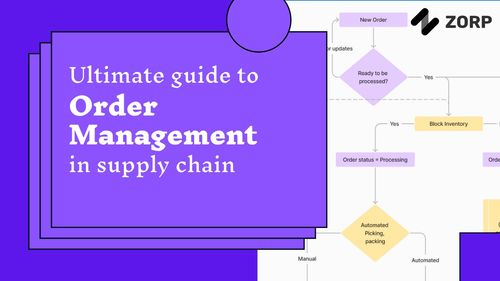When it comes to managing your business's inventory, accuracy is key. A well-executed physical inventory audit can help ensure that your company's inventory records are accurate, up-to-date, and reliable. In this article, we'll discuss what a physical inventory audit is, why it's essential, methods for conducting one, and best practices to follow for success. So, let's dive in, shall we?
A physical inventory audit, also known as a stocktake or stock count, is a process where a business physically counts its entire inventory to confirm the accuracy of its inventory records. This audit provides valuable information about the actual quantities of items in stock and helps identify discrepancies between the physical count and the inventory records in the company's system.
There are several reasons why businesses conduct physical inventory audits, including:
Accurate inventory records are crucial for financial reporting purposes. Inventory is a significant asset on a company's balance sheet, and inaccuracies can lead to misstated financial statements, tax issues, and poor business decisions.
Regular inventory audits can help identify potential theft, shrinkage, or loss of inventory. By detecting these issues early, businesses can implement preventative measures to minimize losses and safeguard their assets.
Efficient inventory management relies on accurate data. A physical inventory audit helps businesses identify overstocks, understocks, and other inventory-related issues, enabling them to make informed decisions about purchasing, sales, and overall inventory management.
There are two primary methods for conducting a physical inventory audit:
The wall-to-wall method involves counting all items in the inventory at once, typically conducted at the end of the fiscal year or during a specific inventory period. This approach can be time-consuming and labor-intensive but provides a comprehensive overview of the entire inventory.
Cycle counting is a continuous, systematic approach where a portion of the inventory is counted at regular intervals, typically daily or weekly. This method allows businesses to maintain accurate inventory records without the need for a complete shutdown and is less disruptive to daily operations.
To ensure a successful physical inventory audit, consider the following best practices:
Inform your team about the upcoming audit, its purpose,and their individual responsibilities. Clear communication ensures everyone is on the same page and working towards the same goal.
Choose a time when your business experiences minimal disruptions, such as after-hours or during a slow sales period. This will help maintain productivity and ensure a smoother audit process.
Provide training to your team members on how to conduct the audit, including the counting process, handling discrepancies, and using any technology involved. A well-trained team will improve the accuracy and efficiency of the audit.
Use technology, such as barcode scanners, inventory management software, and mobile devices, to streamline the counting process and minimize human error. These tools can also help automate record-keeping and provide real-time data analysis.
Organize your inventory in a logical manner, such as by category, location, or product type. This will make the counting process easier and more efficient. Additionally, develop a consistent method for counting, such as starting in one corner of the warehouse and moving systematically through each aisle.
Maintain detailed records of the audit, including the date, items counted, discrepancies identified, and any corrective actions taken. Accurate record-keeping is essential for financial reporting and future audits.
Conducting regular physical inventory audits helps maintain accurate inventory records and promotes better inventory management practices. Depending on the size and nature of your business, consider performing audits annually, semi-annually, or quarterly.
In conclusion, a well-executed physical inventory audit is crucial for maintaining accurate inventory records, improving financial reporting, preventing theft and loss, and optimizing inventory management. By following the best practices outlined in this article, such as proper planning, utilizing technology, and establishing a systematic approach, your business can successfully conduct an efficient and accurate physical inventory audit.
What should be included in the records of a physical inventory audit?Detailed records should include the date of the audit, items counted, discrepancies identified, and any corrective actions taken. Accurate record-keeping is essential for financial reporting and future audits.

Use the audit templates here to create powerful applications to automate your audit process.


